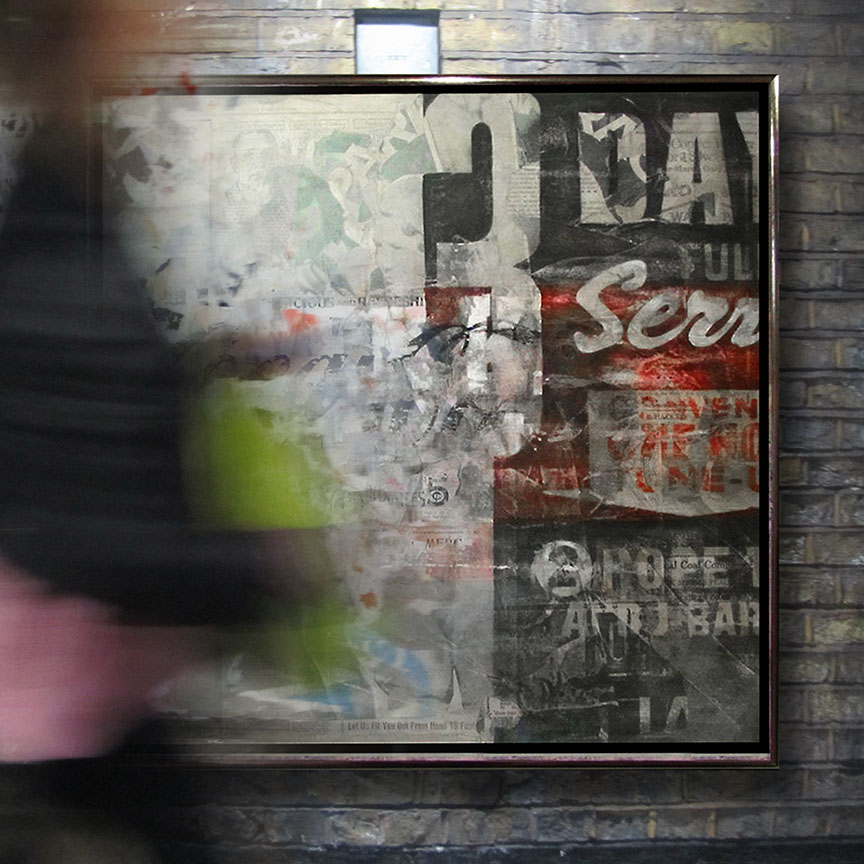
26 Sep How to Order Custom Artwork in 5 Steps | Artist Interview Series with Painter Stewart Anstead
Hello friends! It’s been a while since I’ve blogged and I have missed you! After the Kitchen Makeover for the One Room Challenge and getting Covid, I definitely needed a break this summer. I hope you had a good one. I’m thrilled to be back and reinstating my Artist/Designer Interview Series. This week I share one man’s path to becoming an artist and his unique process, in only 5 steps, to create custom artwork for collectors and interior designers.
Artists Connect on Social Media
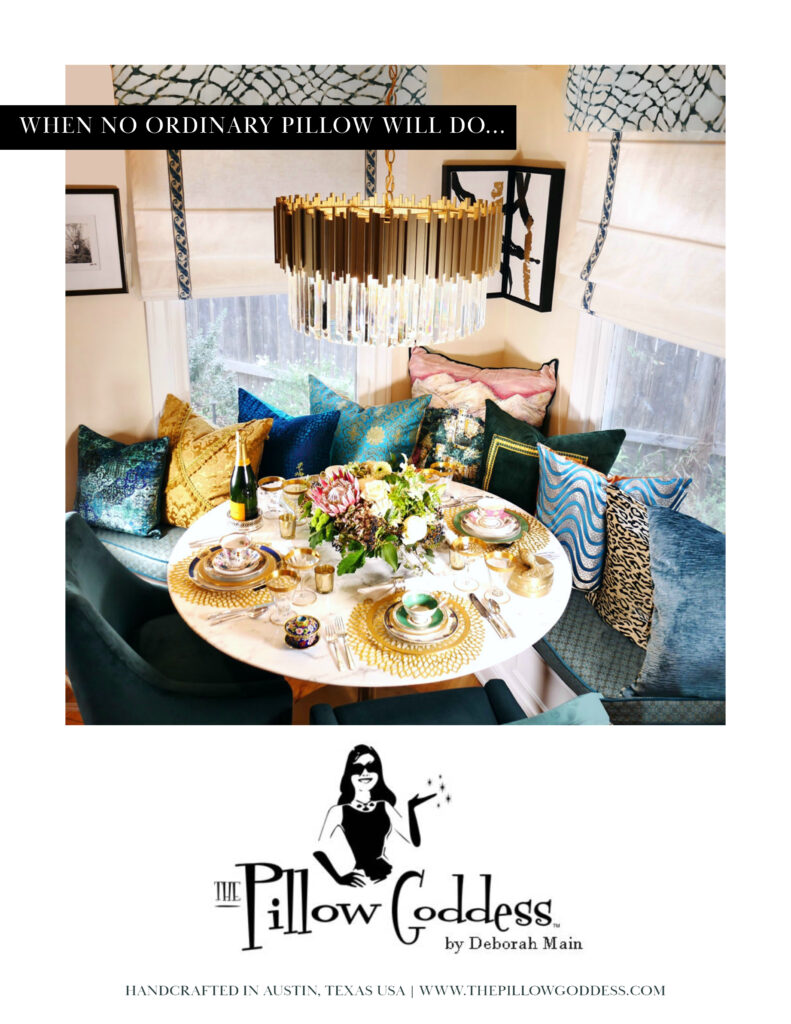
First, a little background on how I know this fine man. Stewart and I met on social media and have been following each other for quite a while now. We both admire each other’s work.
If you remember on Instagram, last summer in 2019, I put out a contest to design my new logo. Stewart so generously offered to give it a shot. I sent him a few photos of me and that was it.
Boy, did he nail it on the first try! So far, I’ve heard nothing but praise for the new logo design. Check it out featured in Julia Molloy’s fabulous new magazine BOLD by Design. (See sidebar for the complete issue.)
“You have to find the joy in it from within yourself”
– Stewart Anstead
Now let’s get right down to the Artist Interview. Please meet artist Stewart Anstead, an international painter whose studio is in Utah.
PG: Stewart, I’ve admired your work for a couple of years now, and I know you have a background in marketing. But I don’t know how you got started in painting. Please tell us a little bit about yourself and what was the catalyst to becoming an artist? Why paint? How did you learn to paint?
SA: Thank you, Deborah. It is interesting how meeting people through social media can actually become a working friendship. I am a fan of your work, as well, and greatly admire the hard work you put into growing your business.
Like most people, I liked doing artwork as a kid. In high school, I had art teachers who believed I had enough talent to do something with art as an adult. This was 1977, so computer art and design was still a ways down the road. Through some crazy twists in life, I ended up attending three different high schools and chose to immerse myself in getting a job and doing artwork. It helped me stay out of mischief.
I suppose that’s been the catalyst for pushing into new methods and media. I liked to use a pencil and shading. But it wasn’t until I was introduced to acrylic paints that I started devoting my art time to that.
In college, my focus was on marketing and advertising, so I only took one art class and one design class. It’s interesting to learn the paths of other professional artists because we all had to gain the confidence to make it worth pursuing. With few exceptions, every artist is self-taught. Like any discipline, playing an instrument, learning a skill or a craft, you have to find the joy in it from within yourself. Being tutored in art classes only takes you so far. I don’t know about you, but if I’m not lighting up the correct side of my brain while doing something, I tend to get bored pretty easily. Art has sometimes been super challenging, but it has never been boring.
“I love to paint landscapes…trees have always had a certain human quality about them which, I think, draws artists to render them.”
– Stewart Anstead
PG: What is your medium of choice and what style of painting do you mostly work in?
SA: I have painted tight realism and loose impressionistic styles. Impressionistic style is much more gratifying. As a rule, if I’m trying to match what a camera sees exactly, then the photo is all that’s needed and my artistry would not be required. Paintings must have something more to say to be worth the effort. I love to paint landscapes and to pick and choose what a layout should, and should not, include. Again, it is a discriminating eye that makes an artist’s expression to become an art piece. Landscapes are great – trees, mountains, oceans, prairies – it’s an endless procession of possibilities.
Trees have always had a certain human quality about them which, I think, draws artists to render them. Out here in Northern Utah, the aspen trees are easy targets for artists to render because they have white bark so the colored light from the groundcover and leaves and sky bounces off them. Plus, they have creepy black eyes all over that make you swear you are being watched. They are really something to see!
“The decaying billboards left a lasting impression on me…and hints of human activity are super-fascinating to me. “
– Stewart Anstead
PG: How has your life experience growing up informed your art?
SA: We drove around a lot as a family in our VW bus as a kid and the decaying billboards we would see left a lasting impression on me. I made a mental note about them (way before having cell phones) and was convinced I would do something with them someday.
In the last 10 years, I have developed my own take on this grunge style of art. Mixed media. Acrylic and paper on canvas, typically. It holds a different level of fun for me. It is more of a free exercise in exploring what can be communicated in the method of paintings and torn paper. They include lettering and imagery and paint strokes and all, but there is something special about giving them a context, rather than just throwing stuff at a canvas. I borrow from signage, advertising, something that gives me a theme. It could be that I am giving attention to a wall sign that has oxidized or otherwise decayed in such a way that several layers covering whole generations are revealed piece by piece. Hints of human activity are super-fascinating to me. That’s been the thing I have noticed about a collector taking interest in these pieces. They seem to put themselves in the work as a participant. Vintage rodeos or ski venues or baseball stadiums … these are the stuff of modern mythology, aren’t they? Public spaces are great subjects to paint because of the human connection that just saturates the art.
“I learned a valuable lesson about being respectful to the subjects I paint and that the meaning of art belongs to everyone’s perceptions and their own experiences.”
– Stewart Anstead
PG: Was there something in your life that was a turning point to becoming an artist?
SA: I had a moment very early in the career that turned that light on for me. I painted a single building within a whole complex of the local steel mill built for the WWII war effort. It was part of a show and a woman came up to me and wanted to buy it. She soon melted into tears telling me her story, and that this was the building where her deceased father had worked for over 30 years. Well, I thought I was painting a warehouse of a dying company with interesting shadows and signage, and she saw a hugely important piece of her life. I learned a valuable lesson about being respectful to the subjects I paint and that the meaning of art belongs to everyone’s perceptions and their own experiences. I also learned that I should try to paint subjects that have meaning of some kind.
PG: Can you describe your creative process before you start a painting?
SA: Everybody has a creative streak in them. I channel my obsession to create things through observing and listening and taking note of things that I see and hear. If something catches my attention, I write it down in my phone’s notes or take a photo or copy an image and then stash it away. I have used those notes to create pieces that reflect the specific paintings I have done. For example, there is a piece with a bright red background I did (see above painting) featuring several unique things about Park City culture. The concept was to use the back wall of a famous landmark–an old automotive garage–which has been renovated into the High West Distillery and then build out more or less an homage to Park City history. All of those elements came from a picture here, a typed out note there.
PG: Please describe a typical day in your studio?
SA: I spend 50% of my workday marketing, shipping, and connecting with people. The rest of my time is either creating rendering possibilities on my computer or painting. I am almost always ‘in the mood’ to paint. I’m never at a loss for ideas of what to paint. Never. In fact, I often have more than one piece in development at a time. I was raised on the radio so there is either music going at all times or there is some podcast I have on. The only time that I don’t have something I’m listening to while working is when I need silence at the end of a project and have a deadline. Listening to things while I work mostly serves to move time along. When it’s quiet, I trick myself into believing I am getting more done in a short timeframe. It isn’t true, but then I still turn the car radio volume down when I merge off a freeway to help me think.
“I think about design and color and contrast and strokes all the time. “
– Stewart Anstead
PG: Often interviewers ask ‘what is your why’? I think it’s important for artists themselves to know and people want to really understand what is at the core of an artist’s motivation. How about you?
SA: I remember being completely entranced by the Batman logo on a t-shirt my folks bought me in the mid-1960s. The notion of design and functionality of design left impressions on me all the time since being very young. I honestly can’t explain why I made notes about making paintings in the future. But I went back and painted those things that I had tabbed in my brain as things I needed to do. My ‘why’ is something that pulls from my core. I hope everyone experiences similar kinds of yearnings and a drive to try to do that thing or to take that trip or to help build that orphanage. It is as spiritual as it is chemical. The force that drives somebody to put in the time that it takes to grab that instinct and make it a part of you is strong in me. I think about design and color and contrast and strokes all the time. When I am having a face-to-face conversation with most anybody, I am painting them at the same time. I am determining highlights, shadows, middle tones, edges, textures, all of that. It is a habit. In a word, my ‘why’ is that I’m compelled to create art and consider it a privilege to participate in it when it can also do some good in the world.
PG: What is some of the best advice you’ve been given by your art teachers?
SA: One of the best suggestions I was ever given was by my high school art teacher, who taught me to try and be less worried about making something look exactly correct. To instead see what interesting things can happen with unexpected strokes, spills, and what the untrained observer would call “mistakes”. Looking back, I am grateful for this advice. Perfectionism in art can be super tedious.
My biggest takeaway through the learning process is that more people would create art if they were steered in the direction that I was. I am convinced that if people were introduced to painting in acrylics and just one or two techniques, anyone could create paintings that they would be proud of. Acrylics are a great introduction to a bigger world. If you are willing to accept imperfection, it’s a very forgiving medium.
“Human connection is the strongest connection in art for me.”
– Stewart Anstead
PG: I see you have a great love for baseball and race cars. I love this one with Paul Newman, one of my all-time favorite actors. How do these fit into your art and why?
SA: First of all, thank you for looking at my work. One piece of advice I didn’t follow was to stick to just one medium, one style, one subject. Talk about boring! The notion is that art investors want to see you stay in your lane and that historically this has been the path to increasing the value of the buyers of your earlier work. That may be true, but I was just painting to sell what I could.
I paint the subjects and media, that I take interest in, and that’s a broad range of things. Baseball and race cars are two. I’ve been a designer professionally from the early 1980s, and a professional painter for 20 years so I’ve covered a lot of ground in that time. In short, I create art that fits the passions of my collectors. If they like the look of my works, they know the outcome will be something they can be proud of. Any subject. Any size.
As I mentioned, painting people can be the most difficult subject, and I think I’m more interested in subjects that involve them. I notice that the human connection is the strongest connection in art for me. You may see bold strokes and contrasting colors. But I also really enjoy creating subtle, more delicate things where it’s called for. This shows up in my DK series of work (above) with the torn paper grunge look I’ve created. Basically, if I can render it, I can paint it. I have worked too hard at this to be pigeon-holed.
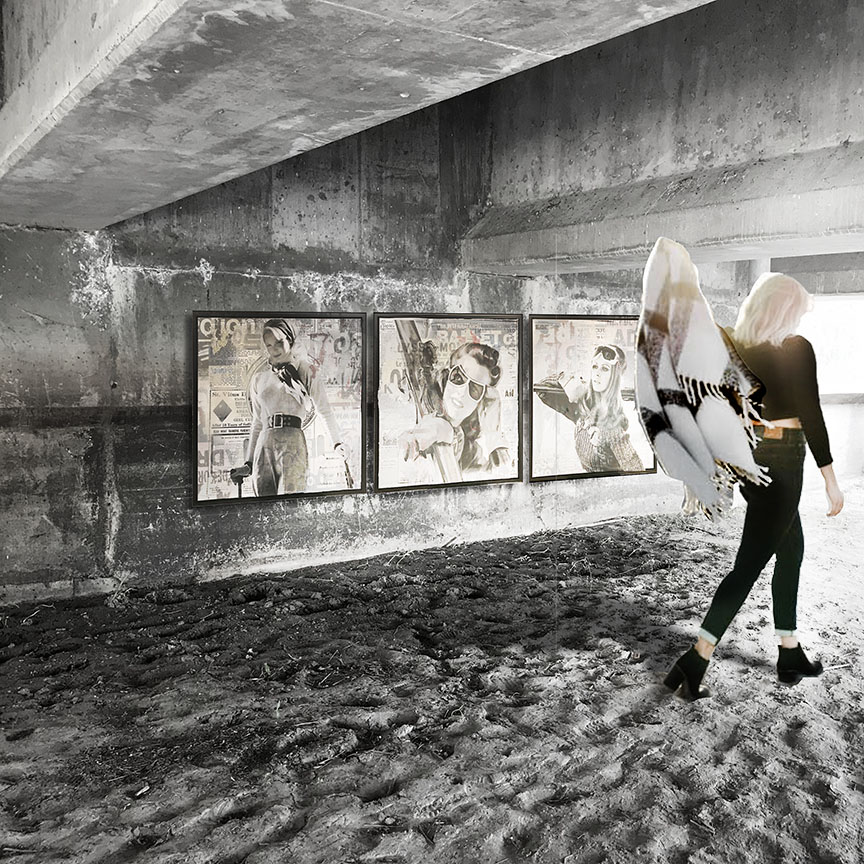
Urban Locations for Art in Unexpected Places, 1937, Acrylic and paper mixed media on canvas by Stewart Anstead – © 2017
“I am in the business of listening to people and interpreting their visions and recollections of the people, places, and things that they love.”
– Stewart Anstead
PG: What feelings, reactions do you hope to get from people who view your work?
SA: That’s an insightful question because you’re an artist yourself, and you know what you hope your work will invoke in people. I work really hard to apply 20 years of knowledge to every piece I do. That means I am responsible to use quality material so my work is built to last. It means I engage all the artistic principles of color, texture, and design that I have learned. And then choosing source material for the subject that becomes my unique take on the world. When I bring these elements into play with my techniques developed over those years, it becomes an artwork. My unique voice is what I bank on. It may be my naiveté, but I actually believe that nobody creates art like me.
But none of this matters outside of my studio unless I am tuned into my collectors. Our relationship is based on my work meeting their wants, wishes, and desires. Their vote for my work through the transaction is what allows me to keep painting for a living so I have learned that I am not in the artwork business … I am in the business of listening to people and interpreting their visions and recollections of the people, places, and things that they love.
The shorter answer I should have given is this: I want each piece to make the new owner want to bring over the guests to their home or office to see the work and tell them their story. I don’t always get to meet my collectors. It’s super-gratifying to see or hear about their reactions to the work.
PG: I understand you have a simple process to create custom works of art for your clients. What prompted you to want to create only commissioned paintings for interior designers and how exactly does that work? What’s the turnaround time?
SA: It’s deceptively simple. One that I have created through years of refinement. Usually, my collectors have a subject they want to be displayed and a specific wall space where they want the work to hang. I know it may not be common, but I paint all subjects.
- People in settings such as sporting events, etc.
- Landscapes
- Abstracts
I create artwork using different styles.
- Impressionism (in acrylics)
- Mixed media (typically using acrylics, acrylic media, and paper)
- Graphic design
“…my approach is a nice solution for many collectors who want something that meets exact needs…in a timely way.”
– Stewart Anstead
5 Steps to Ordering Custom Art Work with Stewart Anstead
- Listening first – I listen to what they would like to accomplish. A story. A scene. A memory. Maybe they just hope to fill a space. All of these are important.
- Walkthrough – I walk through what’s most important. Downplay or eliminate what’s unnecessary.
- Footprint Test – The client sends me a photo of the wall space including a little of the floor and ceiling. I then superimpose over it black rectangles/squares that are proportional to specific sizes. They pick the final size that works best for that spot.
- Layouts – I create a couple of layouts on the computer that combines the elements to make up what I will then paint. I then superimpose these over the wall space photo to simulate a finished product.
- Approval – From there, I create the custom artwork and send photos for approval prior to shipping or delivery.
Sometimes my work is most unique from other artists because of the level of research I may go through to create something that most others cannot. This is driven by our initial consultation, based on desired outcomes.
My turnaround time is relatively quick. Most of the time my collectors will have finished works in their homes within 2-3 weeks of our first conversation, including shipping time to the lower 48 states.
PIN THIS FOR EASY REFERENCE
PG: So homeowners and designers wanting custom works of art can contact you directly with an idea and you take it from there? What guidelines do you give potential clients? And approximately what are the price points of your custom art?
SA: Yes, I sell my work through galleries, interior designers, and directly as well. I love taking commissions through galleries and designers. They always represent motivated collectors and have appreciated having my work in mind for the right people.
The process of sourcing art historically seems to be similar to shopping for any commodity. People go from shop to shop or leaf through websites until they see something that speaks to them. Maybe its done this way through habit, and maybe it can be a fun process. I am finding that my approach is a nice solution for many collectors who want something that meets exact needs and is still delivered in a timely way.
My collectors range from knowing exactly what they want or they turn to their designer for ideas. The only guidelines I give is to agree to one of my computer renderings as the ultimate destination of the art-building journey. I don’t mind making changes.
My pricing is very reasonable, considering it’s commissioned artwork. I make an estimate based on the project, its importance, and the complexity of the work. Complexity can also include the level of research involved.
Typically my work falls within ranges starting at $1,000 on up to $4,000.
“…I fill a niche, within the bespoke art world, to collapse timeframes and produce artwork that fits the space every time, on-time.”
– Stewart Anstead
PG: Why do you choose to paint custom work for collectors and interior designers? Isn’t that contrary to how people are used to purchasing artwork?
SA: Keeping inventory has never worked out for me. It’s a huge expense in time and labor to have pieces just sitting here in the studio. On the face of it, that brings up an issue, I think, with those who are sourcing art and are used to just leafing through the existing inventory to see if they find any artwork that might “fit” with the project. Certainly, this is the way the art-to-buyer relationship has worked for more than 100 years.
What I do instead, is fill a niche within the bespoke world to collapse timeframes and produce work that fits the space every time, on-time. I use Photoshop and 30 years of marketing design and art experience to create work to specifications of the proper size, colors, and themes. I build digital renderings of them that can be reviewed quickly and actually created custom work in a timely way. Designers have the real-time ability to make alterations and I can usually turn those around right away. I create most finished pieces within 1 week, including larger installations such as triptychs. Frames can be provided and usually require five additional days to build. My range of art solutions and the fast timeline to delivery can be considered unique that way.

Josh Gibson vs. Satchel Paige, Negro League Baseball featuring the Homestead Grays and the Kansas City Monarchs by Stewart Anstead.
PG: What’s your favorite piece of your artwork and why?
SA: There are a couple of pieces that are really memorable through the path that it took to create with accuracy. One that stands out is a commission for an epic battle that took place in the Negro Leagues of baseball in the 1940s. It was a game attended by the person who commissioned the work, so I took great pains to recreate the event correctly. Included in the degree of difficulty is that there is no published photos of the event, so I had to identify the actual uniforms that would have been worn in that game. Home team, away team, correct to the year of the game. Also, the scoreboard in that stadium and shown in that year, would have shown the lineup, but finding that information was extremely difficult because the records that were kept are the kind of minutiae that only the most diehard record-keepers would have had access. That was even harder than depicting the specific pitcher and batter in this contest. From the point of view I chose, you will not find photo source material of them in those postures. 90% of sports artists who depict these players use of the 3 or 4 main photos of these players that you can find online. I had neither of them. I used men in baseball uniforms to model them for me. To paint the batter’s side of his face, I researched and found a contemporary photo of a baseball player who looks similar and found a rare photo of that person in this posture. It is a highly gratifying painting from that point of view. It was 20% artistic and 80% forensics.
PG: What inspires you and what other artists do you admire?
SA: I gain inspiration from more contemporary artists, including Richard Schmid, Winslow Homer, Norman Rockwell, and Minerva Teichert from top of mind. But if you’re asking about favorite pieces I have seen and been moved by, this painting is in my top five. This one by William Chase is one of my favorites. It is called “Keynote” by William Chase, painted in 1915. This holds layers of meaning for me. It is beautiful to look at on the face of it, but start unpacking it and you see a wonderful story unfold.
“…a great example of the hidden gems waiting to be discovered through any artistic expression.”
– Stewart Anstead
PG: I sense a real appreciation for the details that make art beautiful and speak to each of us.
SA: Yes, for me, she isn’t playing before an audience. This is just for her. Maybe she has been practicing for a long time on this piece and has just mastered it. In either case, she is about to stand up after having finished playing this song with a confident, posture-perfect, and decisive final note. By her body language, you can tell that she is actually stepping away from the piano as she is playing the final note. In a word, she is dropping the mic before an audience of one. Look at that left wrist. Your instincts sense the shifting of weight on that wrist. This work is Malcolm Gladwell’s 10,000 hours to mastering a skill personified. We are seeing someone who has earned satisfaction through hard work. We don’t see her face. Her feelings at this moment don’t belong to us. I am not female, and I am not a pianist. But I have felt like this with other things in life, learning skills that are hard to do, and that are even harder to master, as she evidently has. This is calm victory, a character trait that I greatly admire.
Digging deeper into this piece, it appears that she is playing a final sustained note. It may even be discoverable that William Chase disclosed the actual song she was playing (if it was truly what he depicted), even though his painting style made it unnecessary to spell it out for us. This is a great example of the hidden gems waiting to be discovered through any artistic expression. A beautiful payoff meant for those with eyes to see and ears to hear.
Charity Auction-100 Artists Supporting
the Negro League Baseball Museum
PG: Thank you for taking the time to speak to me today. Is there anything else you’d like our readers to know about you? I know you have a charity auction of one of your pieces coming up on October 10th. How can they contact and follow your work?
SA: My client’s joy is my joy. Their story belongs to them, not me. That part really excites me! Additionally, I am an artist that practices marketing and a staunch capitalist. I need votes to stay in business, and those votes come in the form of sales. I am honored and grateful to those clients who have chosen me to help tell their story, which allows me to keep doing this full time. Yes, I’m proud to offer a painting up for auction on October 10th to benefit the Negro League Baseball Museum.
I hope your readers, viewers, listeners, and followers will follow my social media. I use the hashtag #AskforanAnstead to underscore the point that I create work that only I can create. Building a brand out of my name and my styles are important to me.
Websites: ansteadarts.com and ansteadsports.com
Twitter: StewartAnstead
Instagram: @AnsteadArts
Contact info: ansteadarts@gmail.com; 801.787.0474
And that my friends is a new artist for you to explore, especially if you have a specific painting in mind you can’t paint yourself or a client has been requesting and you can’t find. Or even a wall in a project you’d like an abstract for with very specific colors. Sounds to me like my friend Stewart Anstead is your man! Please follow him to enjoy his work.
Till next time, enjoy the pretty fall weather and I’ll see you next week talking kitchen ventilation hoods in a lead up to – you guessed it – the fall 2020 One Room Challenge! XO PG





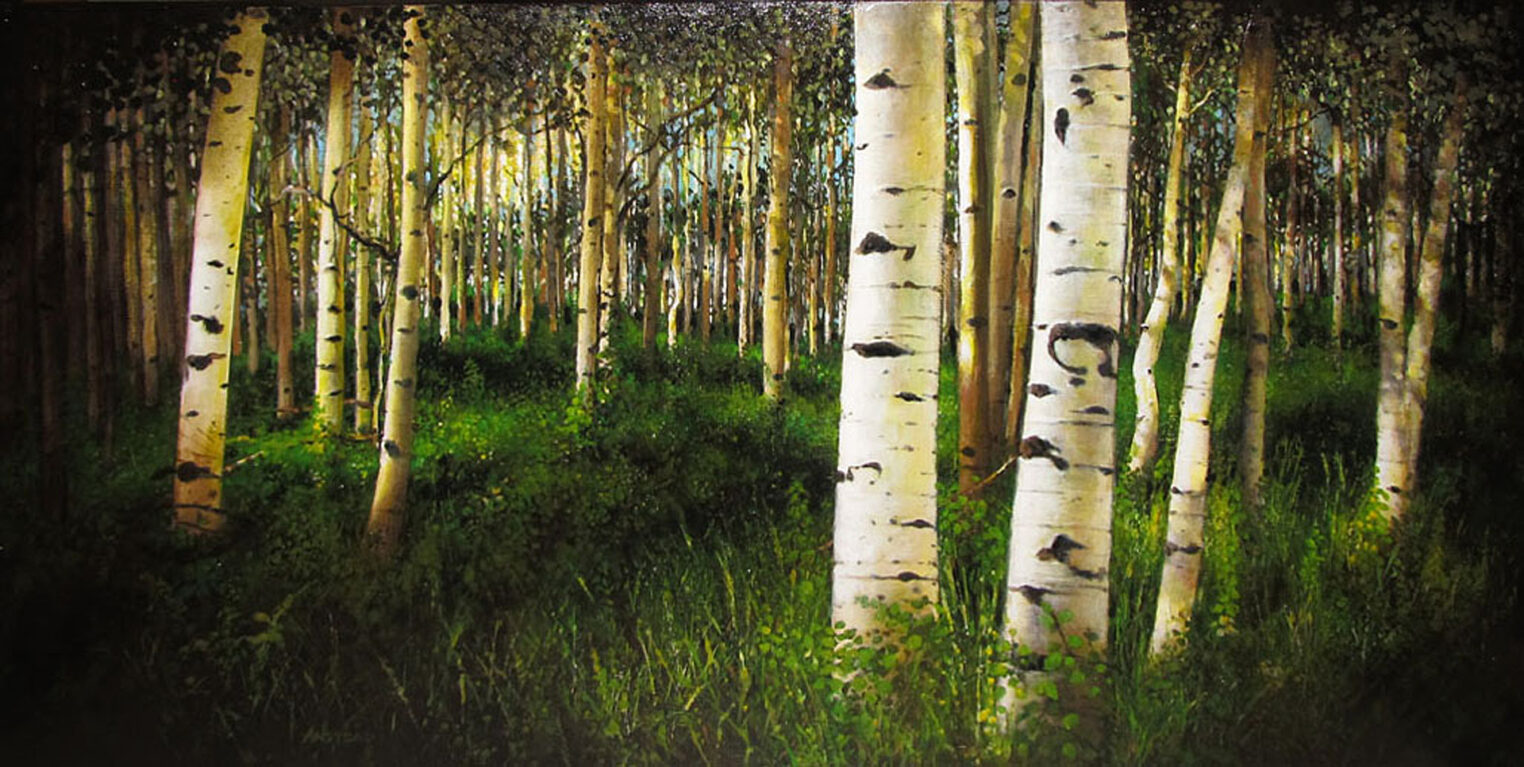
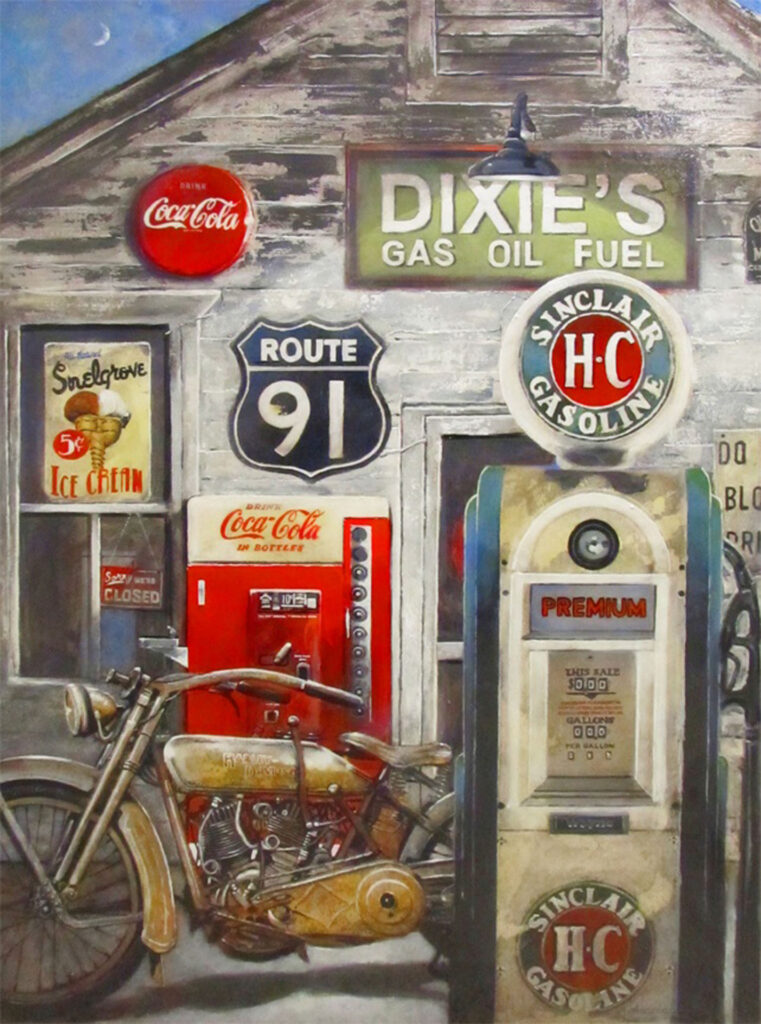
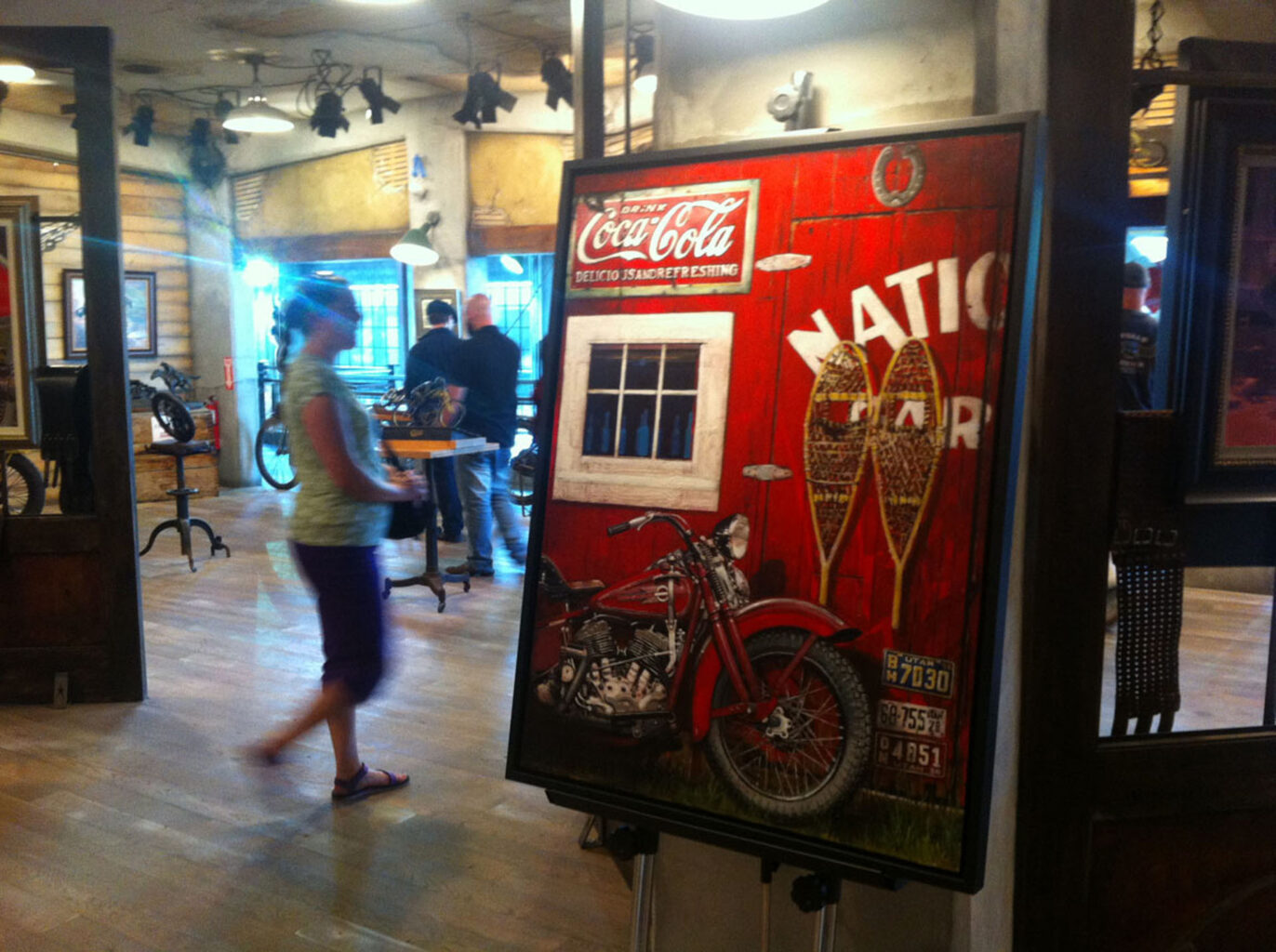
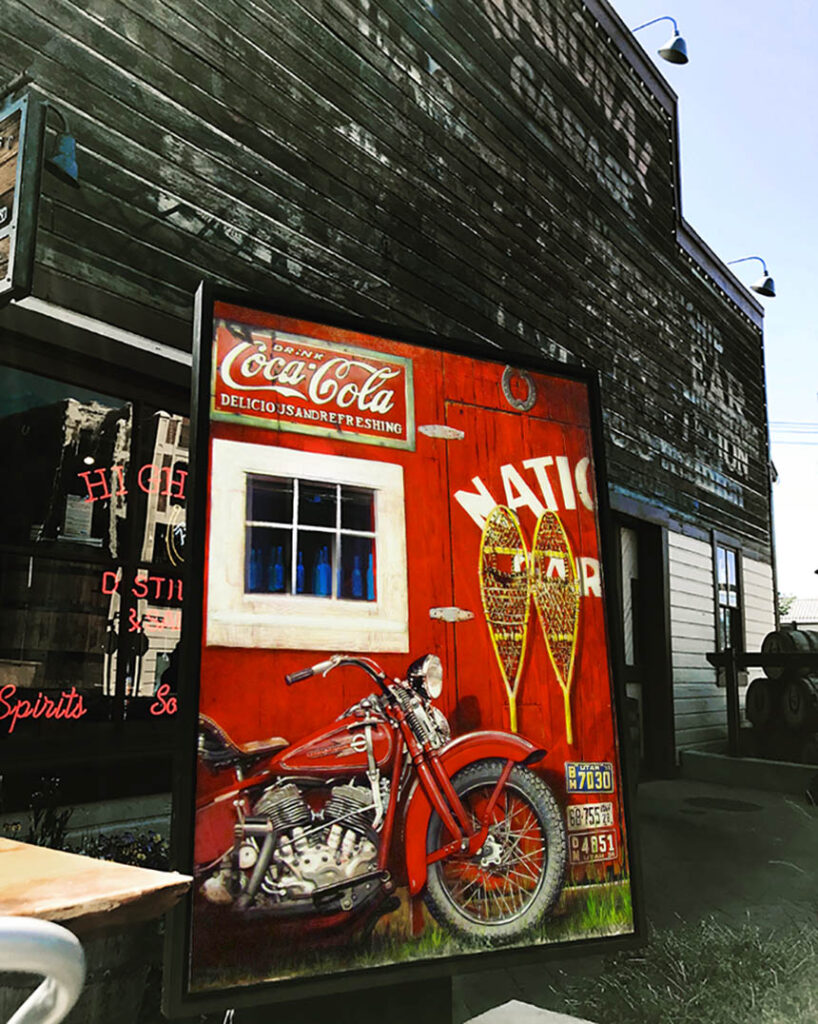
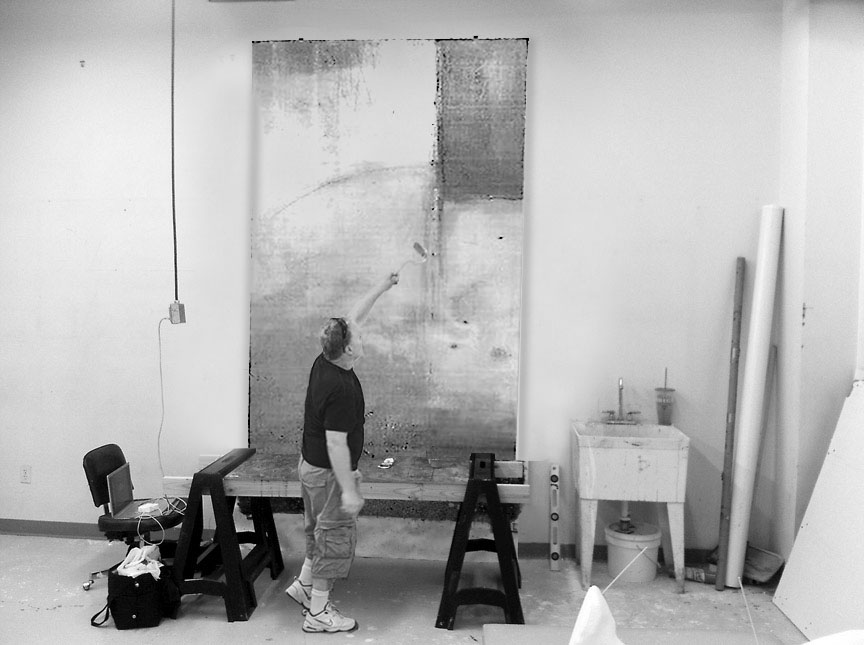

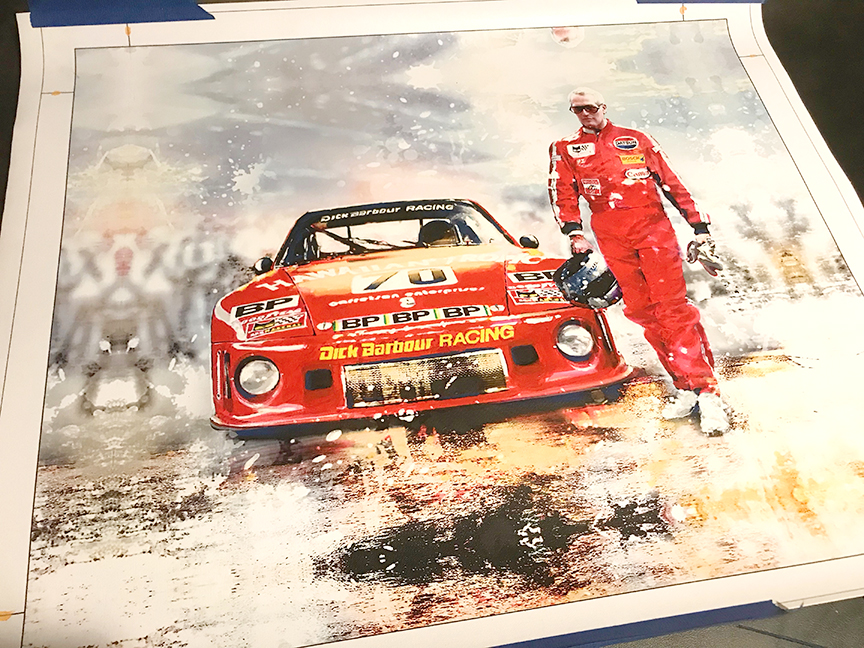



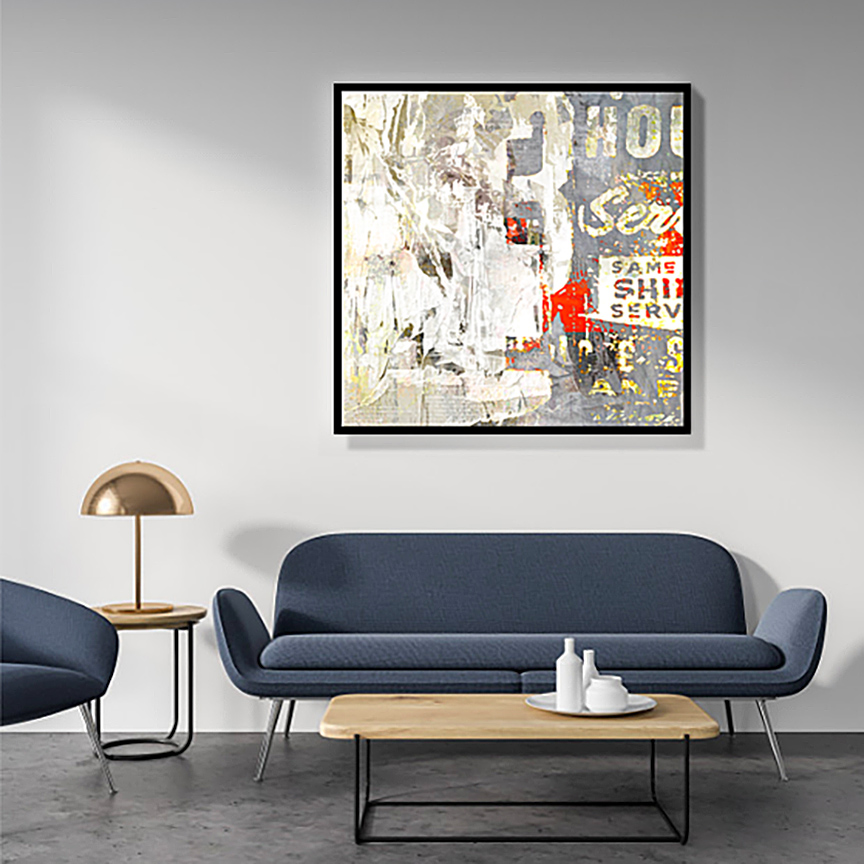

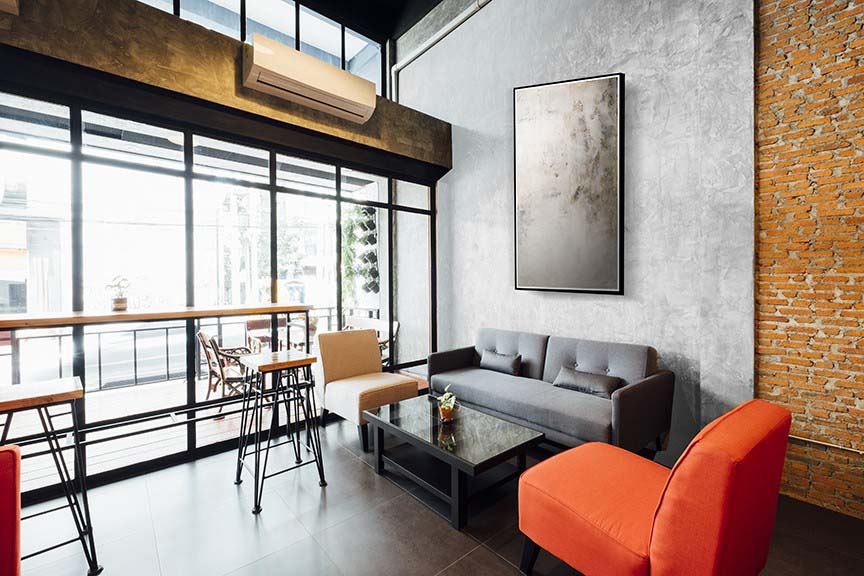
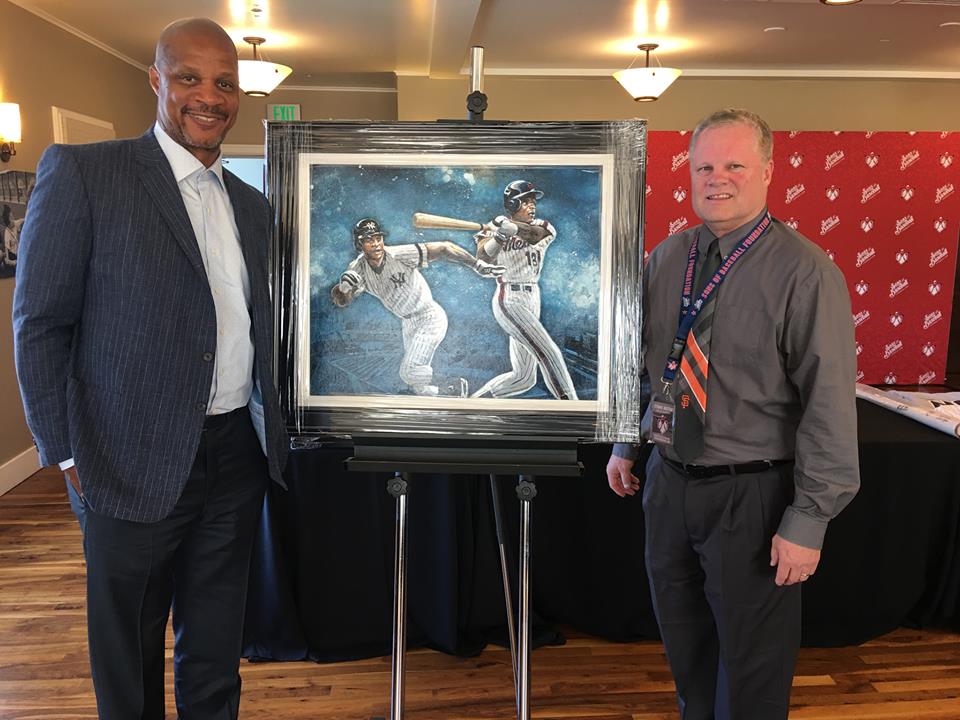


Leslie Carothers
Posted at 18:40h, 26 SeptemberWhat a wonderful interview post, Deb. I really enjoyed learning more about this artist’s work and especially love how he focuses on people’s personal connections to the places that hold special memories for them.
Deborah Main
Posted at 11:30h, 30 SeptemberThank you Leslie! Yes, I too love how he connects with his collectors. Thank you for stopping by the blog.
Sheri Bruneau
Posted at 11:23h, 27 SeptemberThank you for introducing me to this wonderful artist!
Deborah Main
Posted at 11:29h, 30 SeptemberYou’re welcome Sheri. Appreciate you stopping by the blog!
Janet Lorusso
Posted at 16:24h, 27 SeptemberWhat a terrific post, Deborah! Thank you for introducing me to this remarkable artist and wonderful resource!
Deborah Main
Posted at 11:28h, 30 SeptemberThank you Janet! Glad you enjoyed it!